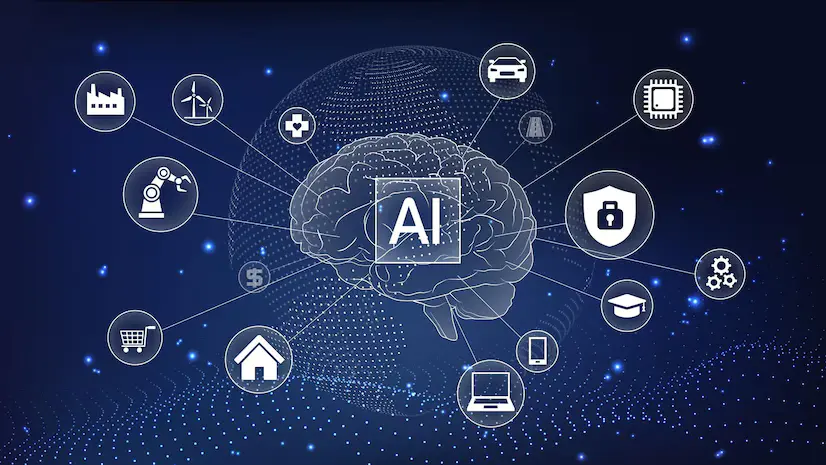The Real-Time Data Revolution: Architectures, Technologies, and Transformative Impact in 2025
Written by: Wasil Abdal
Jul 29, 2025 - 6 minutes read

In 2025, business survival hinges on real-time data processing. Organisations automating 50% of decisions through instant analytics gain unprecedented competitive advantages, from thwarting fraud mid-transaction to personalising customer interactions dynamically. The global real-time analytics market surges toward $27.7 billion by 2026 (CAGR: 28.6%), reflecting an irreversible shift from batch-oriented paradigms to stream-centric architectures. This transformation transcends technology—it redefines how enterprises operationalise data, turning milliseconds of latency into millions in lost revenue.
The Limitations of Legacy Systems
Traditional batch processing—storing data for periodic analysis—creates critical decision-making gaps through high latency (hours/days), inflexible scaling, and resource inefficiency. Financial institutions exemplify this divide: batch systems analyse fraudulent transactions post-settlement, while modern real-time stream processing flags anomalies within 50ms of initiation.
Modern Stream Processing Frameworks
Real-time stream processing analyses data in motion through distributed, fault-tolerant architectures with five core components:
- Ingestion Layer: Apache Kafka, Amazon Kinesis, or Google Pub/Sub capture high-velocity data
- Processing Layer: Engines like Apache Flink perform stateful computations with exactly-once semantics
- Storage Layer: Tiered solutions balance cost and performance
- Analytics Layer: OLAP databases serve sub-second queries
- Action Layer: Insights trigger fraud blocks or maintenance alerts
Overcoming Real-Time Implementation Challenges
1. Real-Time and Batch Mode Monitoring
Effectively balancing real-time and batch processing requires robust state management through periodic checkpointing to ensure fault tolerance. Systems must implement dynamic backpressure mechanisms to automatically throttle data flow during unexpected traffic surges while maintaining pipeline stability. Exactly-once processing semantics are non-negotiable for mission-critical operations like financial transactions to guarantee data accuracy and prevent duplicate processing.
2. Data Governance at Velocity
Maintaining data integrity in high-speed streams demands automated schema evolution to handle structural changes without breaking pipelines. Edge filtering techniques can reduce data volume by 60% at source for IoT deployments, significantly cutting transmission costs. Advanced anomaly detection powered by AI continuously monitors streams for outliers, enabling immediate corrective actions while preserving data quality standards.
3. Cost Optimisation Strategies
Intelligent workload tiering processes time-sensitive data in memory while routing historical analysis to batch systems for cost efficiency. Cold path archiving automatically moves stale data to object storage tiers based on predefined retention policies. Resource recycling through Kubernetes pod reuse achieves 70% faster spin-up times, dramatically improving cluster utilisation and reducing infrastructure expenses.
How Real-Time Stream Processing is Revolutionising Business Operations

Financial Services: Fraud Prevention at the Speed of Transactions
Modern financial institutions leverage real-time stream processing to:
- Detect fraudulent transactions within 50 milliseconds of initiation
- Reduce false positives by 30% through machine learning pattern recognition
- Save $12M annually in prevented fraud losses for mid-sized banks
- Process 2.1 million transactions per minute during peak periods
Healthcare: Saving Lives With Instant Data Analysis
Hospitals implementing real-time data processing solutions report:
- 18% reduction in ICU mortality rates through instant patient monitoring
- 40% faster sepsis detection compared to batch processing systems
- 95% accuracy in predicting patient deterioration using streaming AI models
- Sub-second alerts when critical health metrics cross dangerous thresholds
Manufacturing: Predictive Maintenance That Never Sleeps
Leading manufacturers using real-time stream processing and big data achieve:
- 30% reduction in unplanned equipment downtime
- 15% increase in overall production efficiency
- $3.7M annual savings per factory in maintenance costs
- Millisecond response to abnormal machine vibrations or temperature spikes
Retail: Personalisation That Happens in the Blink of an Eye
E-commerce giants powered by real-time and batch mode monitoring systems:
- Increase conversion rates by 22% with instant product recommendations
- Reduce cart abandonment by 17% through real-time price adjustments
- Process 500,000+ customer events per second during holiday sales
- Deliver personalised offers within 200ms of in-store check-ins
Telecommunications: Keeping Networks Running Smoothly
Telecom providers using real-time stream processing solutions:
- Identify and resolve network issues 80% faster than batch systems
- Reduce customer churn by 12% through immediate service quality monitoring
- Process 5TB of network logs per hour for instant anomaly detection
- Maintain 99.999% uptime through predictive capacity planning
Transportation: Smarter Logistics in Motion
Fleet operators leveraging real-time data processing achieve:
- 15% reduction in fuel costs through dynamic route optimisation
- 20% faster delivery times via real-time traffic pattern analysis
- Process GPS data from 50,000+ vehicles simultaneously
- Reduce accident rates by 25% with instant driver behaviour monitoring
AI, Edge, and Privacy Innovations in Stream Processing

AI-Powered Streaming Architectures
Modern stream processing frameworks now natively integrate machine learning capabilities through:
- Embedded model inference engines that execute predictions directly within data pipelines, eliminating external service calls. These lightweight models process high-velocity streams while maintaining sub-millisecond latency for critical decision points.
- Self-optimising data flows where reinforcement learning algorithms dynamically adjust processing parameters. Systems automatically tune window sizes, parallelism, and resource allocation in response to changing data patterns and throughput requirements.
Edge Processing Revolution
The evolution of distributed stream processing now emphasises:
- Decentralised execution models that push stateful processing capabilities to edge nodes. This architectural shift enables local aggregation and filtering while maintaining consistency with centralised systems.
- Hybrid orchestration frameworks that seamlessly coordinate workloads across edge devices and cloud environments. Emerging solutions automatically partition computations based on latency requirements, data gravity, and resource constraints.
Privacy-Preserving Stream Processing
Next-generation platforms incorporate:
- Cryptographic techniques like zero-knowledge proofs validate streaming data patterns without exposing raw information. These methods maintain processing efficiency while meeting stringent compliance requirements.
- Distributed learning paradigms that operate directly on streaming data. Federated approaches allow model training across isolated data sources while preserving data locality and ownership.
Technical Implementation Challenges
These innovations introduce new considerations:
- Resource constraints for embedded ML at the edge demand optimised model architectures and efficient tensor operations.
- State synchronisation between edge and cloud nodes requires novel consistency models beyond traditional checkpointing.
- Privacy-preserving techniques must balance computational overhead with real-time processing requirements.
These technologies’ convergence drives fundamental changes in stream processing architectures, moving beyond traditional cloud-centric models to distributed, intelligent systems capable of secure, low-latency operation across heterogeneous environments.
Real-Time Infrastructure Architecture for Stream Processing
TeraDB Cloud delivers an integrated environment for real-time stream processing of big data at any scale. The platform’s architecture resolves key industry pain points:
Cost-Efficiency: 40% lower TCO than self-managed clusters through auto-scaling and spot instance utilisation.
Legacy Migration: Guided transition from batch architectures to streaming pipelines
Governance Integration: Centralised schema enforcement, GDPR-compliant masking, and lineage tracking
Conclusion: The Real-Time Imperative
Batch processing belongs to an era of retrospective insight. Real-time stream processing defines the future, where milliseconds determine millions in value. From preventing fraud mid-transaction to halting equipment failures before they happen, streaming architectures transform data velocity into decisive advantage.
Yet implementation demands mastery of three pillars:
- Balancing low latency with ironclad consistency
- Governing data integrity at terabyte-scale speeds
- Optimising costs without compromising performance
The next frontier—AI-embedded pipelines, intelligent edge processing, and zero-trust privacy—will separate leaders from laggards. As data hurtles toward 163 zettabytes, one truth emerges:
“Batch systems narrate the past; stream processing authors the future in real-time ink”
Related Posts
No related posts found.